We will explore the fascinating intersection between cannabis and film and literature, specifically focusing on the iconic stoner characters that have captivated audiences throughout the years. Whether you’re a cannabis enthusiast or simply curious about the portrayal of this controversial plant in popular culture, this deep dive into iconic stoner characters will provide you with a fresh perspective and a glimpse into the rich tapestry of cannabis in entertainment. From classic films to beloved books, get ready to embark on a journey that showcases the diverse portrayals of cannabis and the memorable characters associated with it. So sit back, relax, and join us as we explore the intriguing world of cannabis in film and literature.
The Rise of Cannabis Culture in Entertainment
Early Representations of Cannabis Use
Cannabis has been featured in entertainment for decades, with early representations often depicting it as a taboo substance associated with deviant behavior. Films like “Reefer Madness” in the 1930s painted a picture of cannabis use leading to madness, violence, and moral degradation. These exaggerated portrayals fueled the stigma surrounding cannabis and influenced public perception for years to come.
Influence of Counterculture Movements
In the 1960s and 1970s, counterculture movements, such as the hippie movement, embraced cannabis as a symbol of rebellion against mainstream society. Films like “Easy Rider” showcased the use of cannabis as a form of anti-establishment protest, further solidifying its connection to counter-cultural movements. This era marked a turning point in the representation of cannabis in entertainment, as it began to be portrayed more positively as a means of self-expression and freedom.
Mainstream Adoption and Commercial Success
As the counterculture movements of the 60s and 70s gave way to the 80s and beyond, cannabis culture started to infiltrate mainstream entertainment. Filmmakers recognized the growing popularity and commercial potential of cannabis-themed content. The success of films like “Cheech & Chong: Up in Smoke” and “Half Baked” showcased the market demand for stoner comedies and paved the way for more films to embrace and profit from cannabis culture. As a result, iconic stoner characters became more prevalent and beloved by audiences.
Iconic Stoner Characters
Cheech and Chong – Up in Smoke
No discussion of iconic stoner characters would be complete without mentioning Cheech and Chong. These legendary comedians, Richard “Cheech” Marin and Tommy Chong, have portrayed various stoner characters throughout their careers, but their debut film “Up in Smoke” (1978) remains a classic in the genre. Their comedic chemistry, outrageous adventures, and unabashed embrace of cannabis culture have made them enduring figures in the stoner comedy canon.
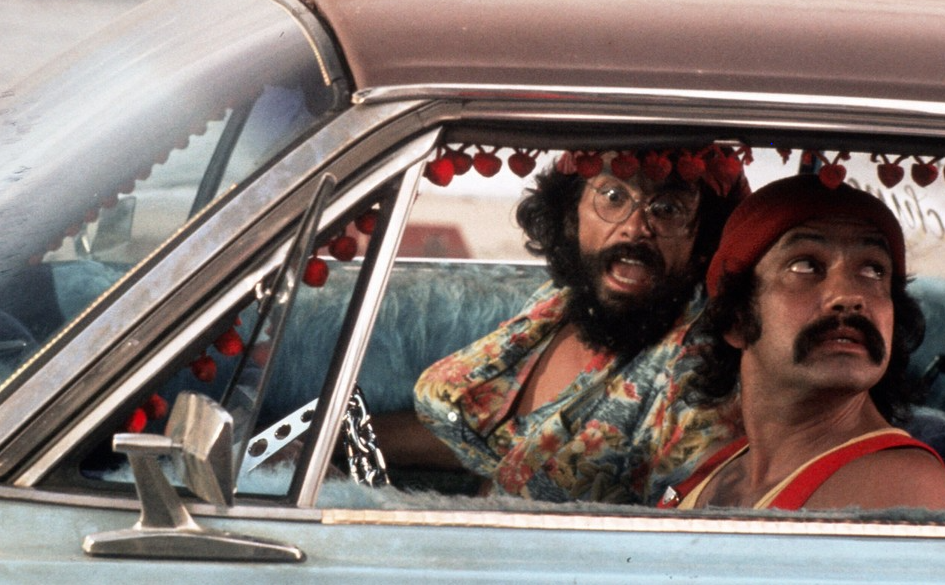
Jeff Spicoli – Fast Times at Ridgemont High
One of the earliest iconic stoner characters in film is Jeff Spicoli, portrayed by Sean Penn in the 1982 film “Fast Times at Ridgemont High.” Spicoli epitomizes the typical high school stoner, often seen smoking cannabis and exhibiting a laid-back and carefree attitude. His memorable catchphrases and amusing antics made him an instant fan favorite and set the stage for future stoner characters in the film.

The Dude – The Big Lebowski
The character of The Dude, played by Jeff Bridges in “The Big Lebowski” (1998), has become a cult icon in stoner culture. The Dude’s love for White Russians, his signature bathrobe, and his penchant for philosophical musings make him one of the most beloved stoner characters in cinematic history. His chilled-out persona and ability to navigate chaos while staying true to his cannabis-fueled lifestyle resonated with audiences and solidified his status as an iconic figure.
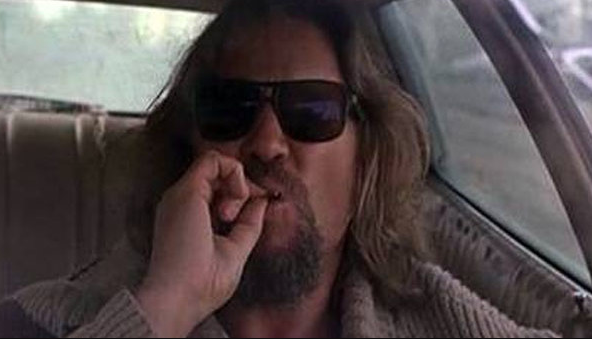
Brian – Half Baked
Jim Breuer’s character, Brian, in Half Baked is the quintessential embodiment of the perpetually blissed-out stoner. With his hazy, carefree demeanor and perpetually wide-eyed expression, Brian is the most enthusiastic and unapologetic weed user of the group. His character is central to many of the film’s funniest moments, often serving as comic relief with his spaced-out observations and absurd antics. Unlike Thurgood, Brian fully embraces the stoner lifestyle without much concern for consequences, making him an iconic and beloved character in the film. His love for weed is pure and unwavering, and while he may not undergo significant personal growth, Brian’s character adds to the film’s charm by capturing the humorous and carefree essence of the stoner archetype.
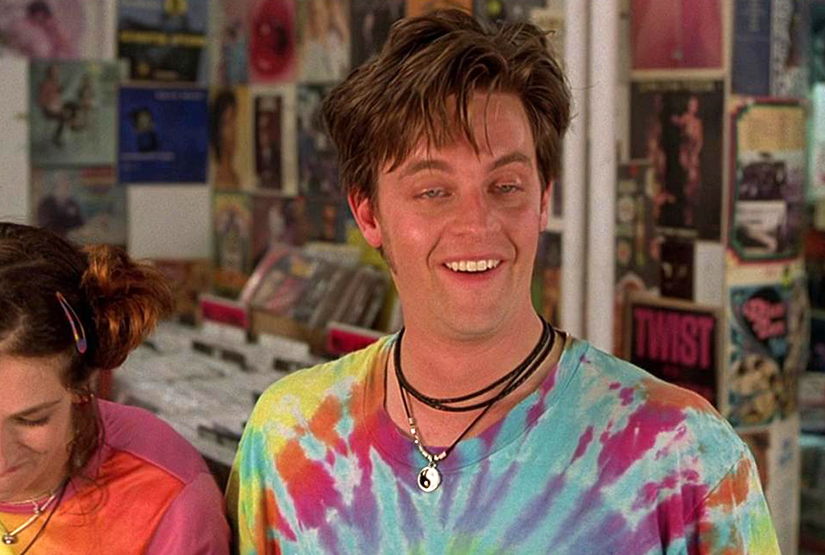
Jay and Silent Bob – Clerks
Kevin Smith’s film “Clerks” (1994) introduced audiences to the lovable duo of Jay and Silent Bob, played by Jason Mewes and Smith himself, respectively. While Silent Bob rarely speaks, Jay is the talkative, cannabis-loving sidekick, mastering the art of comedic delivery. This pair quickly became fan favorites and made appearances in several other films, embracing the stoner culture and adding a touch of humor to the narrative.
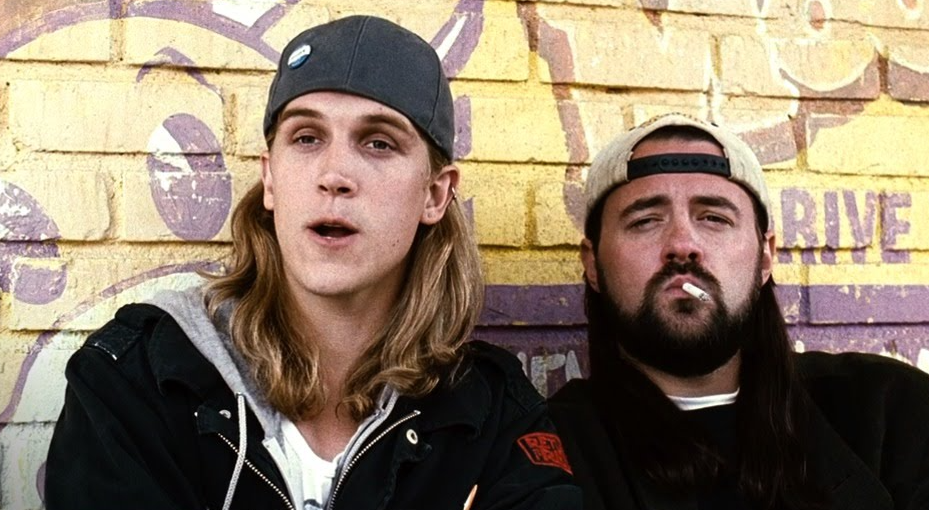
Harold and Kumar – Harold & Kumar Go to White Castle
The 2004 film “Harold & Kumar Go to White Castle” brought another dynamic stoner duo to the big screen. Harold and Kumar, portrayed by John Cho and Kal Penn, respectively, embark on a hilarious and adventure-filled quest for fast food while indulging in their love for cannabis along the way. Their on-screen chemistry and relatable shenanigans endeared them to audiences, making them instant icons of the stoner genre.
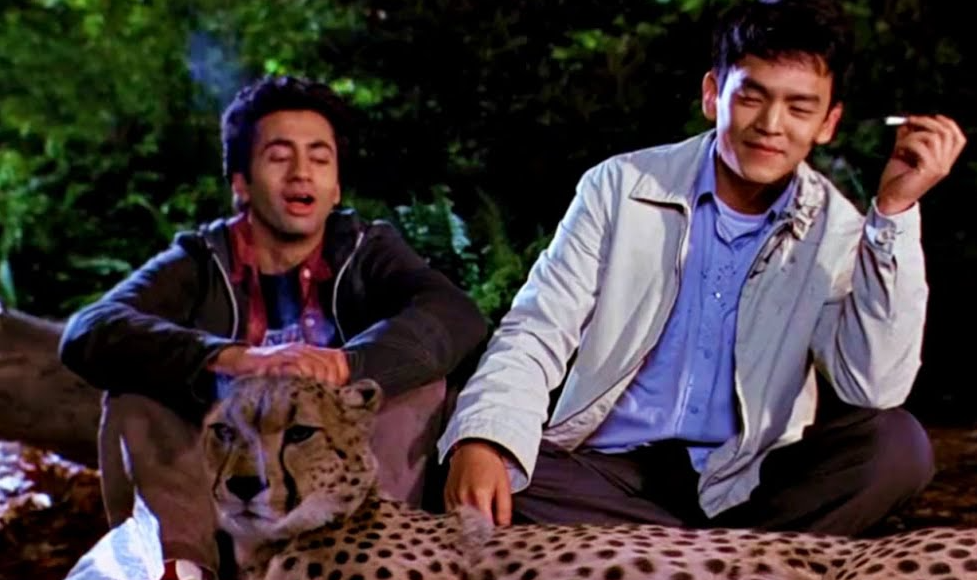
Saul Silver – Pineapple Express
In the 2008 film “Pineapple Express,” James Franco portrays the affable drug dealer Saul Silver. Known for his boundless enthusiasm and propensity for getting high, Saul becomes enmeshed in a series of misadventures with his unlikely friend played by Seth Rogen. Franco’s charismatic portrayal of Saul further solidifies his place among the iconic stoner characters of contemporary cinema.
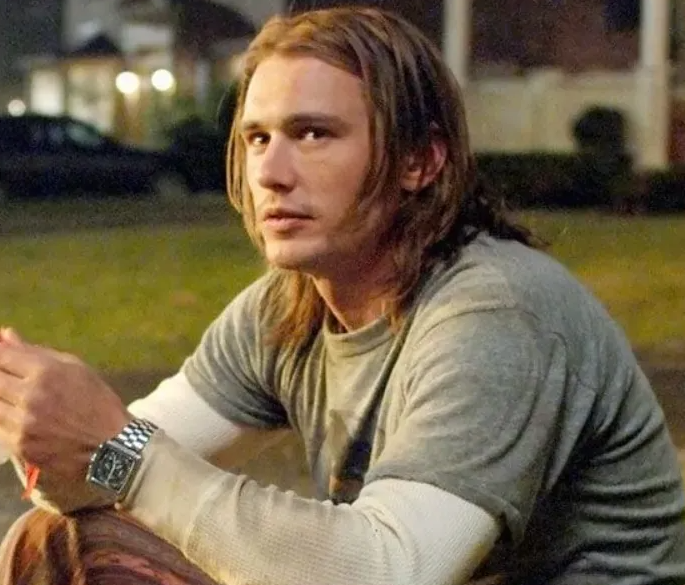
Smokey – Friday
Chris Tucker’s portrayal of Smokey in the 1995 film “Friday” catapulted him into stardom. Smokey’s constant cannabis consumption, witty one-liners, and vibrant personality made him an instant favorite among audiences. Smokey’s character showcased the humor and camaraderie that often accompany cannabis use, while also addressing the potential pitfalls and consequences of overindulgence.
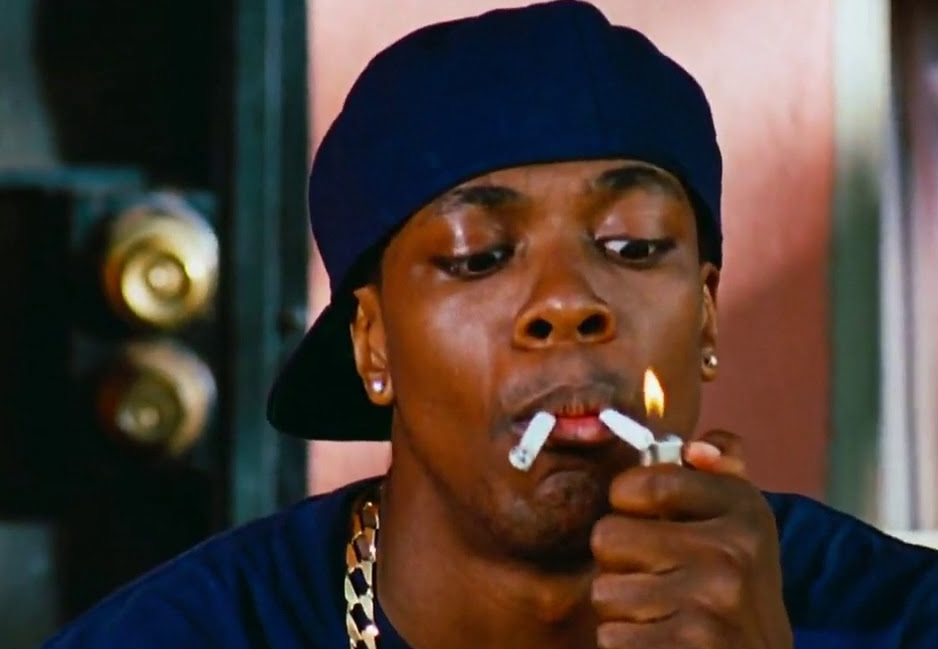
Thurgood Jenkins – Half Baked
In Half Baked, Dave Chappelle’s character, Thurgood Jenkins, stands out as an iconic representation of the carefree yet unexpectedly responsible stoner. As a janitor by day and a dedicated weed enthusiast by night, Thurgood’s character embodies the humorous and light-hearted side of cannabis culture. His use of weed is central to the film’s plot, driving both the comedic and absurd situations that arise. Despite his laid-back attitude and love for marijuana, Thurgood eventually faces the reality of his choices, making him a memorable figure who balances humor with a subtle message about personal growth and responsibility amidst the haze of stoner antics.

Nancy Botwin – Weeds
The television series “Weeds” (2005-2012) follows the life of Nancy Botwin, played by Mary-Louise Parker, as she navigates the world of marijuana cultivation to support her family. Nancy’s character challenges traditional gender roles and stereotypes associated with cannabis use, showcasing a strong female lead in a predominantly male-dominated industry. Her portrayal illustrates the complexities and realities of the cannabis world beyond the stoner archetype.

Impact and Significance of Stoner Characters
Representation and Stereotypes
Stoner characters in film and literature have played a significant role in shaping public perceptions and reinforcing stereotypes associated with cannabis use. While some characters perpetuate the image of lazy, unintelligent individuals solely focused on getting high, others challenge these stereotypes by portraying stoners as multifaceted individuals with unique qualities and aspirations. The impact of these characters on the public’s understanding of cannabis culture cannot be underestimated.
Cannabis Culture Influence
Stoner characters have not only influenced public perception but have also had a profound impact on cannabis culture itself. The rise of iconic stoner characters in entertainment has contributed to the mainstream acceptance and normalization of cannabis use. This normalization has helped destigmatize the plant and has played a crucial role in the ongoing push for cannabis legalization and regulation.
Addressing Taboos and Challenging Norms
Stoner characters have often served as vehicles for addressing taboos surrounding cannabis and challenging societal norms. By featuring cannabis use in their narratives, these characters have sparked discussions about the potential benefits and drawbacks of cannabis, as well as the broader issues of drug policy reform and individual freedom. Their presence in film and literature has played a crucial role in encouraging more open dialogue and exploration of the topic.
Cannabis in Literature
Authors and Books with Cannabis Themes
Cannabis has also found its way into literature, with many authors exploring themes related to the plant. Authors like Jack Kerouac, Hunter S. Thompson, and Tom Robbins have incorporated cannabis culture into their works, depicting the experiences and perspectives of individuals who consume the plant. These literary explorations provide insights into cannabis use beyond the stereotypes presented in popular media.
Here’s a list of related books with cannabis themes by authors who have explored the culture and experiences surrounding cannabis:
- Jack Kerouac
- On the Road (1957) – While not solely focused on cannabis, this novel captures the countercultural spirit of the Beat Generation, where cannabis use was part of the lifestyle.
- Hunter S. Thompson
- Fear and Loathing in Las Vegas (1971) – A wild ride through drug culture, including cannabis, with Thompson’s signature gonzo journalism style.
- Tom Robbins
- Another Roadside Attraction (1971) – Robbins’ novel blends the absurd and philosophical, including cannabis use as part of the characters’ unconventional lives.
- Martin Torgoff
- Can’t Find My Way Home: America in the Great Stoned Age, 1945-2000 (2004) – A comprehensive look at America’s drug culture, with a significant focus on cannabis.
- Michael Pollan
- The Botany of Desire: A Plant’s-Eye View of the World (2001) – This book explores the relationship between humans and plants, including a section dedicated to cannabis.
- Leslie A. Fiedler
- Freaks: Myths and Images of the Secret Self (1978) – This book discusses countercultural figures, including cannabis users, and their impact on society.
- Doug Fine
- Too High to Fail: Cannabis and the New Green Economic Revolution (2012) – A look into the emerging legal cannabis industry and its broader implications.
- Mikal Gilmore
- Night Beat: A Shadow History of Rock & Roll (1999) – Although focused on music, this book dives into the influence of cannabis on rock culture.
- Bruce Barcott
- Weed the People: The Future of Legal Marijuana in America (2015) – This book examines the growing legalization movement and the cultural shift surrounding cannabis.
- Tom Wolfe
- The Electric Kool-Aid Acid Test (1968) – While more centered on LSD, this book captures the broader drug culture of the 1960s, including cannabis.
These books offer a range of perspectives on cannabis, from cultural and historical contexts to personal experiences and societal impacts.
Exploration of Psychedelic Experiences
Cannabis has been known to have psychedelic properties, and some authors have delved into the exploration of altered states of consciousness induced by cannabis use. These literary works often delve into the subjective experiences and perceptions of characters under the influence of cannabis, providing readers with a glimpse into the unique world opened up by the plant.
Cannabis as a Symbol of Rebellion and Freedom
In literature, cannabis is frequently used as a symbol of rebellion against societal norms and individual freedom. The act of consuming cannabis becomes a metaphorical act of defiance, challenging conventional wisdom and embracing personal autonomy. This thematic exploration is prevalent in both contemporary and classic works of literature, resonating with individuals who seek to challenge the status quo.
To Wrap It Up
Cannabis culture has thrived in film and literature, with iconic stoner characters representing the plant and its enthusiasts in various ways. From the early portrayals of cannabis as a dangerous substance to the more nuanced and multifaceted characters of today, these representations have influenced public perception while reinforcing stereotypes or challenging norms. Stoner characters have played a vital role in the mainstream adoption and commercial success of cannabis-themed entertainment, leading to a greater acceptance and normalization of cannabis use in society. Furthermore, the portrayal of cannabis in literature has allowed for a deeper exploration of its effects, symbolism, and potential impact on individuals and society as a whole. As the cultural conversation around cannabis continues to evolve, the presence of iconic stoner characters in film and literature will undoubtedly shape the narrative for years to come.
© 2024 by Lazarat.com. All rights reserved. No part of this document may be reproduced or transmitted in any form or by any means, electronic, mechanical, photocopying, recording, or otherwise, without prior written permission of Lazarat.com.
Leave a Reply